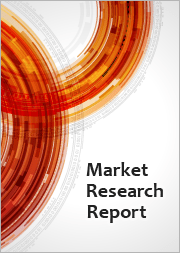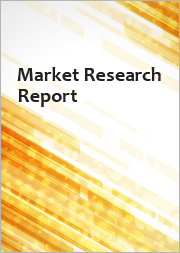
|
시장보고서
상품코드
1679230
경구 단백질 및 펩티드 시장 예측(-2030년) : 제품 유형별, 약제 유형별, 제형별, 생물학적 표적별, 작용기서별, 용도별, 최종사용자별, 지역별 세계 분석Oral Proteins and Peptides Market Forecasts to 2030 - Global Analysis By Product Type (Oral Peptides and Oral Proteins), Drug Type, Dosage Form, Biological Target, Mechanism of Action, Application, End User and By Geography |
||||||
Stratistics MRC에 따르면 세계의 경구 단백질·펩티드 시장은 2024년에 79억 달러를 차지하며 예측 기간 중 CAGR은 21.9%로 성장하며, 2030년에는 259억 달러에 달할 전망입니다.
경구용 단백질-펩티드는 아미노산으로 구성된 큰 생물학적 활성 분자로, 다양한 건강 문제를 치료하기 위해 경구 섭취됩니다. 저분자 의약품과 달리 장내 흡수율이 낮고 효소에 의한 분해 등의 문제가 있습니다. 침투 촉진제, 나노입자 인캡슐레이션 등 약물전달 기술의 발달로 약물의 생체 이용률이 향상되고 있습니다. 주사를 대체하는 비침습적 치료법은 치료 효과를 유지하면서 자가면역질환, 당뇨병, 골다공증 등의 치료에 사용되고 있습니다.
국제당뇨병연맹에 따르면 2021년 전 세계 약 5억 3,700만 명의 성인이 당뇨병을 앓고 있으며, 2045년에는 7억 8,300만 명에 달할 것으로 예측했습니다.
노령인구 증가
노인 인구 증가는 경구용 단백질-펩티드 시장을 크게 견인하고 있습니다. 노인들은 만성질환에 대한 효과적이고 투여하기 쉬운 치료가 필요한 경우가 많기 때문입니다. 특히 중국, 일본, 인도 등의 국가에서 고령화 인구가 증가함에 따라 당뇨병, 위장장애, 골질환 등 노화 관련 질환의 발생률이 높아지면서 경구용 단백질-펩티드 치료제에 대한 수요가 크게 증가하고 있습니다. 이러한 인구 통계학적 변화는 시장 확대에 기여하고 있으며, 고령 환자들은 일반적으로 순응도 및 삶의 질 향상을 위해 주사보다 비침습적 경구 투여를 선호하므로 세계 시장은 성장할 것으로 예상됩니다.
낮은 생체 이용률
낮은 생체 이용률은 경구용 단백질 및 펩티드 시장의 큰 과제이며, 이러한 치료제의 효능을 제한하고 있습니다. 경구 투여되는 대부분의 펩티드는 소화관에서 분해되어 상피 장벽을 통과할 수 없기 때문에 생체 이용률이 2% 미만이며, 반감기가 30분 미만으로 짧습니다. 이러한 분자는 일반적으로 분자량이 높고 친유성이 낮으며, 하전된 관능기가 흡수를 저해합니다. 생체 이용률에 영향을 미치는 다른 요인으로는 전신성 프로테아제에 대한 민감성, 빠른 대사, 옵소닌화, 형태 변화, 불안정한 측쇄기 파괴 등이 있으며, 이러한 제한을 극복하기 위해서는 첨단 전달 기술이 필요합니다.
치료 용도 확대
경구용 단백질 및 펩티드 시장은 기존 적응증을 넘어 새로운 용도를 찾음에 따라 치료 용도의 확대가 큰 기회로 작용하고 있습니다. 이 시장은 당뇨병과 호르몬 장애에 대한 기존 적응증 외에도 말단비대증, 체강내 거대세포증, 체강내 염증성장질환, 만성 특발성 변비, 장내 고산소뇨증, 염증성장질환 등 다양한 질환에 대한 적응증이 확대되고 있습니다. 이러한 용도의 다양화는 기술 혁신을 촉진하고 잠재적 시장 규모를 크게 확대하고 있습니다.
부작용
부작용은 심각한 위협이 될 수 있으며, 채택과 상업적 성공을 제한할 수 있습니다. 단백질-펩티드 치료제의 복잡한 특성은 경구 투여시 예상치 못한 반응의 위험을 증가시킵니다. 생체 이용률과 안정성을 높이기 위해 필요한 변형은 이러한 분자의 안전성 프로파일을 변화시킬 수 있습니다. 또한 생물제제 개발에는 10-15년이 소요되고 막대한 자본 투자가 필요하므로 안전성과 유효성을 확보하기 위한 개발 비용이 높으며, 특히 중소기업의 경우 시장 개발에 장벽이 되고 있습니다.
COVID-19의 영향:
COVID-19 팬데믹은 초기에는 공급망 문제와 비응급 치료의 연기를 통해 경구용 단백질 펩티드 시장을 혼란에 빠뜨렸습니다. 그러나 의료 시스템이 집에서 투여할 수 있는 보다 환자 친화적인 치료법을 요구하면서 결국 약물전달 기술의 혁신이 가속화되었습니다. COVID-19는 병원 방문 횟수를 줄여주는 경구용 제제의 중요성을 부각시켰으며, 특히 만성질환을 앓고 있는 면역결핍 환자들에게 도움이 되었습니다. 이러한 치료 선호도의 변화는 경구용 단백질 및 펩티드 치료제에 지속적인 모멘텀을 가져다주었습니다.
예측 기간 중 인슐린 수용체 분야가 가장 큰 시장으로 성장할 것으로 예상됩니다.
인슐린 수용체 부문은 전 세계 당뇨병 유병률의 급격한 증가로 인해 예측 기간 중 가장 큰 시장 점유율을 차지할 것으로 예상됩니다. 국제당뇨병연맹에 따르면 2021년에는 약 5억 3,700만 명의 성인이 당뇨병을 앓고 있으며, 2045년에는 7억 8,300만 명에 달할 것으로 예상됩니다. 이러한 엄청난 환자 수는 기존 주사에 대한 비침습적 대안을 제공하는 경구용 인슐린 제제에 대한 큰 수요를 창출하고 있으며, 노보 노디스크(Novo Nordisk)와 오라메드 파마슈티컬스(Oramed Pharmaceuticals)와 같은 기업은 효소 분해와 흡수 장애를 극복하는 혁신적인 경구용 인슐린 제제를 개발하고 있습니다. 제제를 개발하고 있으며, 이 분야에 대한 대대적인 투자와 시장 성장을 가속하고 있습니다.
예측 기간 중 경구용 액체/액상 제제 부문이 가장 높은 CAGR을 나타낼 것으로 예상됩니다.
예측 기간 중 경구용 용액/액상 제제 분야는 생체이용률과 환자 순응도에 큰 이점이 있으며, 가장 높은 성장률을 보일 것으로 예상됩니다. 액체 제제는 나노입자, 침투 촉진제, 프로테아제 억제제 등의 특수 전달 기술을 통해 소화관내 흡수 장애를 극복할 수 있습니다. 이러한 제제는 노약자나 연하곤란 환자에게 특히 유용합니다. 빠른 작용 발현과 정확한 투여가 가능한 액체 제제는 빠른 치료 반응을 필요로 하는 질환에 점점 더 매력적으로 다가오고 있으며, 새로운 경구용 솔루션 기술의 연구개발에 많은 투자가 이루어지고 있습니다.
가장 큰 점유율을 차지하는 지역:
예측 기간 중 북미가 가장 큰 시장 점유율을 차지할 것으로 예상됩니다. 이러한 우위는 첨단 의료 인프라, 높은 의료비, 혁신적인 약물전달 시스템에 대한 막대한 투자에 기인합니다. 미국은 북미 시장에서 큰 비중을 차지하고 있으며, 전 세계 의약품 연구개발의 약 40%를 지출하고 있습니다. 이 지역은 FDA와 같은 기관이 당뇨병 치료제인 경구용 세마글루티드와 같은 혁신적인 치료제를 신속하게 승인하는 등 유리한 규제 정책의 혜택을 누리고 있으며, 주요 시장 기업의 존재는 북미의 선도적 지위를 더욱 강화하고 있습니다.
CAGR이 가장 높은 지역:
예측 기간 중 아시아태평양은 급속한 헬스케어 투자 증가, 만성질환 유병률 증가, 환자 수 증가로 인해 가장 높은 CAGR을 보일 것으로 예상됩니다. 중국, 일본, 인도 등의 국가에서는 노령 인구가 크게 증가하고 있으며, 이는 효과적인 치료 솔루션을 필요로 하는 노화 관련 질환의 발생률 증가에 기여하고 있습니다. 가처분 소득 증가와 의료 인프라 강화를 위한 정부의 구상에 힘입어 이 지역 전체에서 의료비 지출이 증가하면서 시장에 큰 모멘텀을 제공합니다.
무료 커스터마이징 서비스:
이 보고서를 구독하는 고객은 다음과 같은 무료 맞춤화 옵션 중 하나를 이용할 수 있습니다.
- 기업소개
- 추가 시장 기업의 종합 프로파일링(최대 3사)
- 주요 기업의 SWOT 분석(최대 3사)
- 지역 세분화
- 고객의 관심에 따른 주요 국가별 시장 추정, 예측, CAGR(주: 타당성 확인에 따라 다름)
- 경쟁사 벤치마킹
- 제품 포트폴리오, 지역적 입지, 전략적 제휴에 기반한 주요 기업의 벤치마킹
목차
제1장 개요
제2장 서문
- 개요
- 이해관계자
- 조사 범위
- 조사 방법
- 데이터 마이닝
- 데이터 분석
- 데이터 검증
- 조사 어프로치
- 조사 정보원
- 1차 조사 정보원
- 2차 조사 정보원
- 전제조건
제3장 시장 동향 분석
- 촉진요인
- 억제요인
- 기회
- 위협
- 제품 분석
- 용도 분석
- 최종사용자 분석
- 신흥 시장
- COVID-19의 영향
제4장 Porter's Five Forces 분석
- 공급 기업의 교섭력
- 바이어의 교섭력
- 대체품의 위협
- 신규 진출업체의 위협
- 경쟁 기업 간 경쟁 관계
제5장 세계의 경구 단백질·펩티드 시장 : 제품 유형별
- 경구 펩티드
- 경구 단백질
제6장 세계의 경구 단백질·펩티드 시장 : 약제 유형별
- Semaglutide
- Linaclotide
- Plecanatide
- Calcitonin
- Insulin
- Octreotide
- Trofinetide
- Voclosporin
- Desmopressin
- 기타 약제 유형
제7장 세계의 경구 단백질·펩티드 시장 : 제형별
- 정제
- 캡슐
- 경구 액제/액체 제제
제8장 세계의 경구 단백질·펩티드 시장 : 생물학적 표적별
- GC-C(Guanylate Cyclase-C)
- 인슐린 수용체
- 옥살산
- 기타 생물학적 표적
제9장 세계의 경구 단백질·펩티드 시장 : 작용기서별
- 수용체 자극
- 기재 분해
- 기타 작용기서
제10장 세계의 경구 단백질·펩티드 시장 : 용도별
- 당뇨병
- 위 및 소화기 질환
- 뼈질환
- 호르몬 장애
- 감염증
- 유전성 질환
- 기타 용도
제11장 세계의 경구 단백질·펩티드 시장 : 최종사용자별
- 병원
- 전문 클리닉
- 홈케어 설정
- 장기요양 시설
- 연구·학술기관
- 제약회사
제12장 세계의 경구 단백질·펩티드 시장 : 지역별
- 북미
- 미국
- 캐나다
- 멕시코
- 유럽
- 독일
- 영국
- 이탈리아
- 프랑스
- 스페인
- 기타 유럽
- 아시아태평양
- 일본
- 중국
- 인도
- 호주
- 뉴질랜드
- 한국
- 기타 아시아태평양
- 남미
- 아르헨티나
- 브라질
- 칠레
- 기타 남미
- 중동 및 아프리카
- 사우디아라비아
- 아랍에미리트
- 카타르
- 남아프리카공화국
- 기타 중동 및 아프리카
제13장 주요 발전
- 계약, 파트너십, 협업, 합병사업
- 인수와 합병
- 신제품 발매
- 사업 확대
- 기타 주요 전략
제14장 기업 프로파일링
- Novo Nordisk A/S
- Eli Lilly and Company
- Sanofi
- AstraZeneca
- AbbVie Inc.
- Takeda Pharmaceutical Company Limited
- Roche Holding AG
- Merck & Co., Inc.
- Pfizer Inc.
- Novartis AG
- Bristol-Myers Squibb Company
- Amgen Inc.
- Biocon Limited
- Oramed Pharmaceuticals Inc.
- Chiasma, Inc.
- Entera Bio Ltd.
- Proxima Concepts Limited(Diabetology Ltd)
- Rani Therapeutics Holdings, Inc.
According to Stratistics MRC, the Global Oral Proteins and Peptides Market is accounted for $7.9 billion in 2024 and is expected to reach $25.9 billion by 2030 growing at a CAGR of 21.9% during the forecast period. Oral proteins and peptides are large, biologically active molecules made up of amino acids that are meant to be taken by mouth to treat a variety of health problems. Unlike small-molecule medicines, they have problems such as low intestinal absorption and enzymatic breakdown. Technological developments in drug delivery, such as permeability enhancers and nanoparticle encapsulation, increase the bioavailability of drugs. Non-invasive substitutes for injections, these treatments are used to treat autoimmune diseases, diabetes, and osteoporosis while still having therapeutic efficacy.
According to the International Diabetes Federation, approximately 537 million adults globally were living with diabetes in 2021, with projections reaching 783 million by 2045.
Market Dynamics:
Driver:
Growing geriatric population
The growing geriatric population significantly drives the oral proteins and peptides market, as older individuals often require effective, easy-to-administer treatments for chronic conditions. As the aging population increases, particularly in countries like China, Japan, and India, there is a higher incidence of age-related diseases such as diabetes, gastrointestinal disorders, and bone diseases, creating substantial demand for oral protein and peptide therapies. This demographic shift contributes to market expansion, with the global market projected to grow as elderly patients typically prefer non-invasive oral administration over injections for improved compliance and quality of life.
Restraint:
Low bioavailability
Low bioavailability presents a significant challenge for the oral proteins and peptides market, limiting the effectiveness of these therapeutics. Most orally administered peptides have a bioavailability of less than 2% and short half-lives of under 30 minutes due to degradation in the gastrointestinal tract and inability to cross the epithelial barrier. These molecules typically have high molecular weights, low lipophilicity, and charged functional groups that hamper absorption. Additional factors affecting bioavailability include susceptibility to systemic proteases, rapid metabolism, opsonization, conformational changes, and destruction of labile side groups, necessitating advanced delivery technologies to overcome these limitations.
Opportunity:
Expanding therapeutic applications
Expanding therapeutic applications represent a significant opportunity in the oral proteins and peptides market as these formulations find new uses beyond traditional indications. The market is witnessing growth in applications for various conditions, including acromegaly, celiac disease, chronic idiopathic constipation, enteric hyperoxaluria, and inflammatory bowel disease, alongside established uses for diabetes and hormonal disorders. This diversification of applications is driving innovation and expanding the potential market size substantially.
Threat:
Adverse side effects
Adverse side effects pose a significant threat, potentially limiting adoption and commercial success. The complex nature of protein and peptide therapeutics increases the risk of unexpected reactions when administered orally. The modifications required to enhance bioavailability and stability may alter the safety profile of these molecules. Additionally, the high development costs associated with ensuring safety and efficacy-with biological drug development taking 10-15 years and requiring substantial capital investment-create barriers to market entry, particularly for smaller players.
Covid-19 Impact:
The COVID-19 pandemic initially disrupted the oral proteins and peptides market through supply chain challenges and postponed non-emergency treatments. However, it ultimately accelerated innovation in drug delivery technologies as healthcare systems sought more patient-friendly treatments that could be administered at home. The pandemic highlighted the importance of oral formulations that reduce hospital visits, particularly beneficial for immunocompromised patients with chronic conditions. This shift in treatment preferences has created lasting momentum for oral protein and peptide therapeutics.
The insulin receptor segment is expected to be the largest during the forecast period
The insulin receptor segment is expected to account for the largest market share during the forecast period due to the rapidly growing global diabetes prevalence. According to the International Diabetes Federation, approximately 537 million adults were living with diabetes in 2021, with projections reaching 783 million by 2045. This enormous patient population creates substantial demand for oral insulin formulations that offer a non-invasive alternative to traditional injections. Companies like Novo Nordisk and Oramed Pharmaceuticals are developing innovative oral insulin formulations that overcome enzymatic degradation and poor absorption challenges, driving significant investment and market growth in this segment.
The oral solutions/liquid formulations segment is expected to have the highest CAGR during the forecast period
Over the forecast period, the oral solutions/liquid formulations segment is predicted to witness the highest growth rate due to significant advantages in bioavailability and patient compliance. Liquid formulations can overcome some absorption barriers in the gastrointestinal tract through specialized delivery technologies, including nanoparticles, permeability enhancers, and protease inhibitors. These formulations are particularly beneficial for elderly patients and those with swallowing difficulties. The rapid onset of action and potential for precise dosing make liquid formulations increasingly attractive for conditions requiring quick therapeutic responses, driving substantial investment in research and development of novel oral solution technologies.
Region with largest share:
During the forecast period, the North America region is expected to hold the largest market share. This dominance stems from advanced healthcare infrastructure, high healthcare expenditure, and significant investments in innovative drug delivery systems. The United States accounts for a significant share in the North American market, spending approximately 40% of global pharmaceutical R&D. The region benefits from favorable regulatory policies, with agencies like the FDA expediting approvals for innovative therapies such as oral semaglutide for diabetes, while the presence of key market players further strengthens North America's leadership position.
Region with highest CAGR:
Over the forecast period, the Asia Pacific region is anticipated to exhibit the highest CAGR driven by rapidly increasing healthcare investments, rising prevalence of chronic diseases, and expanding patient populations. Countries like China, Japan, and India are experiencing significant growth in their geriatric populations, contributing to higher incidences of age-related diseases that require effective therapeutic solutions. Increasing healthcare expenditure across the region, supported by rising disposable incomes and government initiatives aimed at enhancing healthcare infrastructure, is providing substantial market momentum.
Key players in the market
Some of the key players in Oral Proteins and Peptides Market include Novo Nordisk A/S, Eli Lilly and Company, Sanofi, AstraZeneca, AbbVie Inc., Takeda Pharmaceutical Company Limited, Roche Holding AG, Merck & Co., Inc., Pfizer Inc., Novartis AG, Bristol-Myers Squibb Company, Amgen Inc., Biocon Limited, Oramed Pharmaceuticals Inc., Chiasma, Inc., Entera Bio Ltd., Proxima Concepts Limited (Diabetology Ltd) and Rani Therapeutics Holdings, Inc.
Key Developments:
In June 2023, Eli Lilly and Company announced new phase 2 data for orforglipron, its first nonpeptide oral glucagon-like peptide-1 (GLP-1) receptor agonist being studied for chronic weight management in participants with obesity or overweighti. The results were shared during an oral presentation at the American Diabetes Association's(R) 83rd Scientific Sessions and were simultaneously published in the New England Journal of Medicine. Orforglipron met both primary and secondary endpoints for the efficacy estimandii and demonstrated clinically significant weight reductions in adults with obesity or overweight, with at least one weight-related comorbidity (not including type 2 diabetes).
In February 2020, Takeda Pharmaceutical Company Limited announced that it has acquired PvP Biologics, Inc. following the conclusion of a Phase 1 proof-of-mechanism study of investigational medicine TAK-062 (Kuma062) for the treatment of uncontrolled celiac disease. TAK-062 is a potential best-in-class, highly potent super glutenase - a protein that degrades ingested gluten - that was computationally engineered to treat celiac disease, a serious autoimmune disease where the ingestion of gluten leads to inflammation and damage in the small intestine. The Phase 1 study investigated TAK-062's safety and tolerability in both healthy volunteers and people with celiac disease. The ability of TAK-062 to degrade ingested gluten was studied in healthy volunteers. Takeda plans to submit data from the Phase 1 study for presentation at an upcoming medical congress.
Product Types Covered:
- Oral Peptides
- Oral Proteins
Drug Types Covered:
- Semaglutide
- Linaclotide
- Plecanatide
- Calcitonin
- Insulin
- Octreotide
- Trofinetide
- Voclosporin
- Desmopressin
- Other Drug Types
Dosage Forms Covered:
- Tablets
- Capsules
- Oral Solutions/Liquid Formulations
Biological Targets Covered:
- Guanylate Cyclase-C (GC-C)
- Insulin Receptor
- Oxalate
- Other Biological Targets
Mechanisms of Actions Covered:
- Receptor Stimulation
- Substrate Degradation
- Other Mechanisms of Actions
Applications Covered:
- Diabetes
- Gastric and Digestive Disorders
- Bone Diseases
- Hormonal Disorders
- Infectious Diseases
- Genetic Disorders
- Other Applications
End Users Covered:
- Hospitals
- Specialty Clinics
- Home Care Settings
- Long-term Care Facilities
- Research and Academic Institutes
- Pharmaceutical Companies
Regions Covered:
- North America
- US
- Canada
- Mexico
- Europe
- Germany
- UK
- Italy
- France
- Spain
- Rest of Europe
- Asia Pacific
- Japan
- China
- India
- Australia
- New Zealand
- South Korea
- Rest of Asia Pacific
- South America
- Argentina
- Brazil
- Chile
- Rest of South America
- Middle East & Africa
- Saudi Arabia
- UAE
- Qatar
- South Africa
- Rest of Middle East & Africa
What our report offers:
- Market share assessments for the regional and country-level segments
- Strategic recommendations for the new entrants
- Covers Market data for the years 2022, 2023, 2024, 2026, and 2030
- Market Trends (Drivers, Constraints, Opportunities, Threats, Challenges, Investment Opportunities, and recommendations)
- Strategic recommendations in key business segments based on the market estimations
- Competitive landscaping mapping the key common trends
- Company profiling with detailed strategies, financials, and recent developments
- Supply chain trends mapping the latest technological advancements
Free Customization Offerings:
All the customers of this report will be entitled to receive one of the following free customization options:
- Company Profiling
- Comprehensive profiling of additional market players (up to 3)
- SWOT Analysis of key players (up to 3)
- Regional Segmentation
- Market estimations, Forecasts and CAGR of any prominent country as per the client's interest (Note: Depends on feasibility check)
- Competitive Benchmarking
- Benchmarking of key players based on product portfolio, geographical presence, and strategic alliances
Table of Contents
1 Executive Summary
2 Preface
- 2.1 Abstract
- 2.2 Stake Holders
- 2.3 Research Scope
- 2.4 Research Methodology
- 2.4.1 Data Mining
- 2.4.2 Data Analysis
- 2.4.3 Data Validation
- 2.4.4 Research Approach
- 2.5 Research Sources
- 2.5.1 Primary Research Sources
- 2.5.2 Secondary Research Sources
- 2.5.3 Assumptions
3 Market Trend Analysis
- 3.1 Introduction
- 3.2 Drivers
- 3.3 Restraints
- 3.4 Opportunities
- 3.5 Threats
- 3.6 Product Analysis
- 3.7 Application Analysis
- 3.8 End User Analysis
- 3.9 Emerging Markets
- 3.10 Impact of Covid-19
4 Porters Five Force Analysis
- 4.1 Bargaining power of suppliers
- 4.2 Bargaining power of buyers
- 4.3 Threat of substitutes
- 4.4 Threat of new entrants
- 4.5 Competitive rivalry
5 Global Oral Proteins and Peptides Market, By Product Type
- 5.1 Introduction
- 5.2 Oral Peptides
- 5.3 Oral Proteins
6 Global Oral Proteins and Peptides Market, By Drug Type
- 6.1 Introduction
- 6.2 Semaglutide
- 6.3 Linaclotide
- 6.4 Plecanatide
- 6.5 Calcitonin
- 6.6 Insulin
- 6.7 Octreotide
- 6.8 Trofinetide
- 6.9 Voclosporin
- 6.10 Desmopressin
- 6.11 Other Drug Types
7 Global Oral Proteins and Peptides Market, By Dosage Form
- 7.1 Introduction
- 7.2 Tablets
- 7.3 Capsules
- 7.4 Oral Solutions/Liquid Formulations
8 Global Oral Proteins and Peptides Market, By Biological Target
- 8.1 Introduction
- 8.2 Guanylate Cyclase-C (GC-C)
- 8.3 Insulin Receptor
- 8.4 Oxalate
- 8.5 Other Biological Targets
9 Global Oral Proteins and Peptides Market, By Mechanism of Action
- 9.1 Introduction
- 9.2 Receptor Stimulation
- 9.3 Substrate Degradation
- 9.4 Other Mechanisms of Actions
10 Global Oral Proteins and Peptides Market, By Application
- 10.1 Introduction
- 10.2 Diabetes
- 10.3 Gastric and Digestive Disorders
- 10.4 Bone Diseases
- 10.5 Hormonal Disorders
- 10.6 Infectious Diseases
- 10.7 Genetic Disorders
- 10.8 Other Applications
11 Global Oral Proteins and Peptides Market, By End User
- 11.1 Introduction
- 11.2 Hospitals
- 11.3 Specialty Clinics
- 11.4 Home Care Settings
- 11.5 Long-term Care Facilities
- 11.6 Research and Academic Institutes
- 11.7 Pharmaceutical Companies
12 Global Oral Proteins and Peptides Market, By Geography
- 12.1 Introduction
- 12.2 North America
- 12.2.1 US
- 12.2.2 Canada
- 12.2.3 Mexico
- 12.3 Europe
- 12.3.1 Germany
- 12.3.2 UK
- 12.3.3 Italy
- 12.3.4 France
- 12.3.5 Spain
- 12.3.6 Rest of Europe
- 12.4 Asia Pacific
- 12.4.1 Japan
- 12.4.2 China
- 12.4.3 India
- 12.4.4 Australia
- 12.4.5 New Zealand
- 12.4.6 South Korea
- 12.4.7 Rest of Asia Pacific
- 12.5 South America
- 12.5.1 Argentina
- 12.5.2 Brazil
- 12.5.3 Chile
- 12.5.4 Rest of South America
- 12.6 Middle East & Africa
- 12.6.1 Saudi Arabia
- 12.6.2 UAE
- 12.6.3 Qatar
- 12.6.4 South Africa
- 12.6.5 Rest of Middle East & Africa
13 Key Developments
- 13.1 Agreements, Partnerships, Collaborations and Joint Ventures
- 13.2 Acquisitions & Mergers
- 13.3 New Product Launch
- 13.4 Expansions
- 13.5 Other Key Strategies
14 Company Profiling
- 14.1 Novo Nordisk A/S
- 14.2 Eli Lilly and Company
- 14.3 Sanofi
- 14.4 AstraZeneca
- 14.5 AbbVie Inc.
- 14.6 Takeda Pharmaceutical Company Limited
- 14.7 Roche Holding AG
- 14.8 Merck & Co., Inc.
- 14.9 Pfizer Inc.
- 14.10 Novartis AG
- 14.11 Bristol-Myers Squibb Company
- 14.12 Amgen Inc.
- 14.13 Biocon Limited
- 14.14 Oramed Pharmaceuticals Inc.
- 14.15 Chiasma, Inc.
- 14.16 Entera Bio Ltd.
- 14.17 Proxima Concepts Limited (Diabetology Ltd)
- 14.18 Rani Therapeutics Holdings, Inc.






